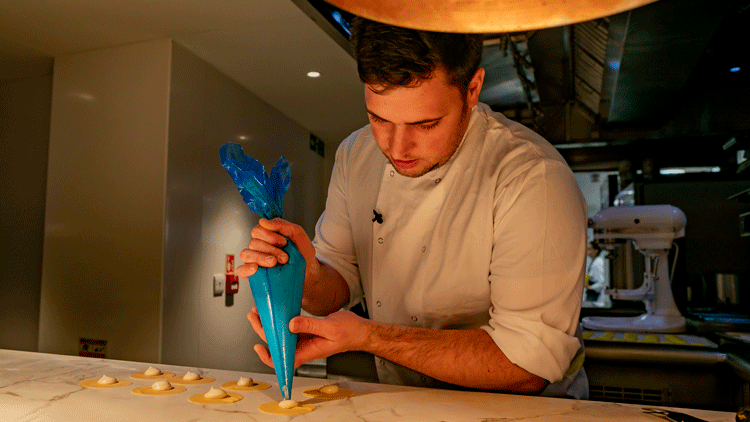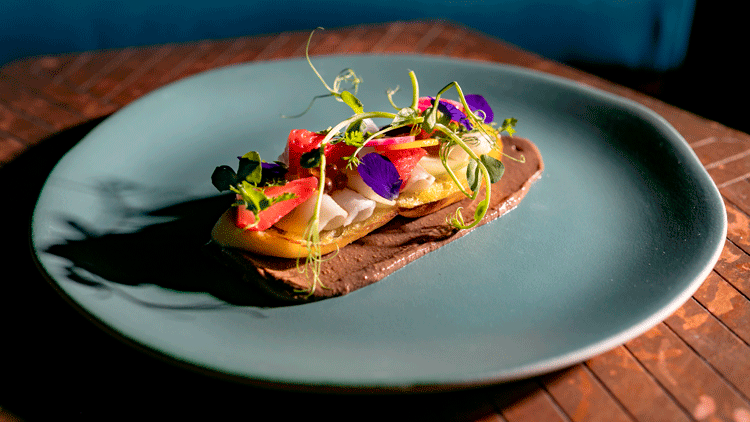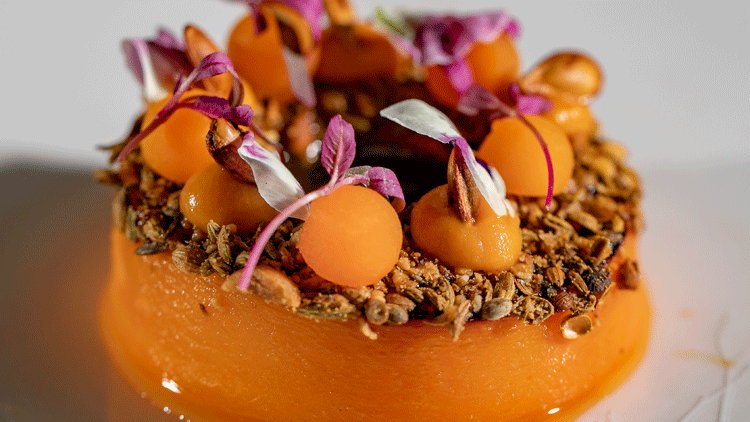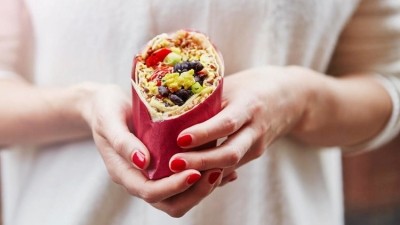Let them eat veg: the rise of plant-based cuisine
Less than half of Gen Z (18 to 21-year-olds) describe themselves as meat-eaters. That should be an extremely sobering piece of information for restaurants with menus heavily focused on meat and fish. Conducted on behalf of fruit and vegetable-specialist Reynolds, the research into consumer eating habits also reveals that 44% of all those surveyed plan to eat more plant-based dishes in 2020.
All this is both a challenge and an opportunity for restaurants, and with this in mind Restaurant and Reynolds assembled a diverse selection of operators at Adam Handling’s Frog restaurant in Covent Garden to share ideas and watch cooking demos from three chefs that are experts at creating plant-based dishes. Businesses represented on the day included Oakman Inns, Redemption Bar, Sodexo, Pizza Pilgrims, SpiceBox, Lexington Catering, Prezzo, Pizza Hut and Pret a Manger.
Tom Brown, head chef at Gauthier in Soho, kicked things off. The venue started out as a classic French restaurant that was especially well-known for foie gras but over the years its chef patron Alexis Gauthier has moved away from animal-derived products. Foie gras is now off the menu and the Romilly Street restaurant now only offers a handful of non-vegan dishes.
Brown says Gauthier is hoping to become fully vegan by the end of 2020. “We’ve cut down to just one fish dish, one shellfish dish and two meat dishes. Alexis turned vegan for health reasons and a love of animals so he’s chosen to take the restaurant in a new direction. We did get a bit of resistance at first but we have managed to convince most of our regulars and we’re now attracting lots of vegetarian and vegan customers.”
Anyone with reservations about whether plant-based ingredients can stand in for animal-based ones should try Gauthier’s macarons. Brown demoed his restaurant’s vegan-friendly take on the classic petit fours, combining potato protein with water to fulfil the same function as egg white. The procedure is almost identical to making meringues in the traditional way, in fact the only difference is that the casings don’t need to be left to form a skin before being put in the oven.
The meringues are filled with a fully-vegan ganache made with lemon purée, cornflour, sugar and high-quality soy spread. The result is both delicious and indistinguishable from a traditionally-made meringue. Brown also demoed Gauthier’s famed truffle tortellini, which is made with a pasta dough in which white miso stands in for eggs, a filling made with a mixture of soy cream, vegan parmesan, truffle oil, vegan cream cheese and freshly grated truffle, and served with an intense sauce made with shiitake mushrooms, nori seaweed and soy sauce that’s finished with soy cream and grated truffle.
Next up was Reynolds development chef Diane Camp. She works with a wide range of Reynolds customers at the company’s Hertfordshire development kitchen. “We help chefs to think more creatively,” she says. “We liaise closely with the procurement team so we’re always getting in new products and working out how to get the best out of them. Chefs’ attitudes to vegetables are changing. They’re getting excited about them and are being more creative. It’s just as well: the rise of veganism and vegetarian means people will no longer accept a pepper stuffed with couscous.”
Her first dish was king oyster mushroom ceviche, which is made by peeling the mushrooms, cutting them into fat little discs and covering them with a hot miso-based broth. “To finish it off I marinate the cooked mushroom in lime juice, smoked olive oil, cucumber, red onion, tomato, chilli and coriander. I add the veg and herbs towards the end to retain a bit of crunch,” she says.
She followed up her ceviche with whipped tofu and black garlic spread with pickled veg. While most types of tofu would work, Camp recommends silken tofu on account of its more subtle flavour. “If you find your tofu has a strong flavour you can add in a tiny bit of coffee that takes some of that flavour away,” she says. The tofu is blitzed with black garlic and than spread on high quality bread before being garnished with pickled chayote and mooli, micro leaves, and pickled strawberries.
Adam Handling was assisted in his demo by Jamie Park who heads up the kitchen at The Frog Hoxton. “I love meat too much. Our East London restaurant is veg-centric and my development in plant-led food is led by Jamie, although I do of course add my two cents.”
His first dish was entitled All About The Pumpkin, which cleverly utilises parts of the squash that are normally thrown away. “We roast the pumpkin and remove the skins. We then put the skins in a juicer and extract every thing we possibly can, then reduce it and mix it with sherry vinegar to create a glaze. We cut the pumpkin into nice fat discs which we confit in olive oil but all the bits we can’t use for that are made into little balls that we pickle. We toast the seeds and use the fibrous parts - which nobody uses as far as I know - to make a miso,” says Handling who - amazingly - makes 20% of his company’s revenue from parts of ingredients that are usually viewed as waste in most other restaurants.
Appropriately, the last dish of the day was a dessert made using parsnips. The team at The Frog Hoxton roast the parsnips, scoop out the centres, dehydrate them and finally rehydrates them to lend a chewy texture. The centres are used to make a roasted hazelnut and parsnip ice cream and the dish is served amid a swirl of dry ice. Plant-based cooking doesn’t get any more creative than that.
























